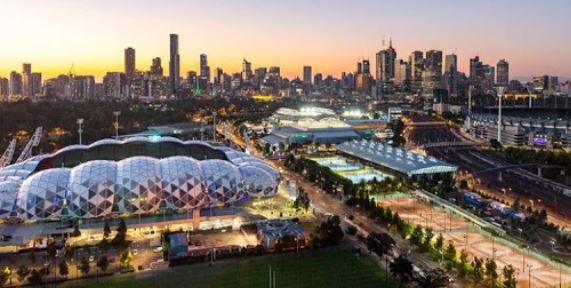
In debates about urban density, we often find comments about buildings that are too high or not high enough, too many or too few residents nearby, and crowded or vacant streets and buildings.
Someone told us that the building density in Melbourne is four times that of Hong Kong, or the density is high, which will make us happy. As the debate about population density in Australian cities continues, what is most often lacking is any clear understanding of what people mean by the term “population density”.
Is it the volume or height of the building? Or the number? The high density of one person may be the spread of another; the same high-rise building may feel depressing or exciting; the “good crowd” of one person can be “overcrowded” by another. In “Through the Mirror”, people think of Humpty Dumpty’s logic:
What this debate needs most is to improve density literacy. Density is a concept borrowed from physics, and its meaning is very clear-mass divided by volume. However, when moving to the city, nothing is easier than this.

Are we talking about buildings or people?

First, we need to figure out whether we are talking about gatherings of people or gatherings of buildings. If we first consider population density, it is usually measured by the number of residents per hectare based on census data.
However, we also need to distinguish between “inside” and “outside” density, that is, the number of people in a room or apartment and the number of people in urban areas. If you look at new high-rise residential buildings at night, you will find many vacant apartments. At the other extreme, internal crowding largely defines slums. Building density does not mean population density.
Population density cannot be based solely on residents, because the number of people in a given neighborhood at a given time includes the number of people working or visiting there. In mixed-use communities, residents may only account for a small percentage of the population density.
As people move around from day to week, there are also population density rhythms. The same urban area can be densely distributed during working hours, and empty on weekends. Population density is not only the number of residents, but also changes over time and with the mix of functions.

How do you measure building density?

When we turn our attention to building density, we soon encounter some inevitable jargon. The most common measure of building density is the “building area ratio” (also known as FAR, FSI, FSR, and floor area ratio)-the ratio of floor space to land area. This is the most widely used measure used to limit mass development on any given plot.
However, it cannot control the height of the building, the “footprint” (the area occupied by the building) or the “coverage” (the proportion of the land occupied by the building). Therefore, it is very possible to establish high-rise low-density (with very low coverage or small footprint) or low-rise high-density (with high coverage or large footprint).
From the 1960s to the 1970s, the FAR of most high-rise public housing was roughly the same as the FAR of low-rise housing demolished for the construction of the housing.
The height of a building is not a measure of density, although sometimes the two will align. Chaos abounds here. Media reports (such as here and here) often equate FAR with height control.
Another common measure of density is the number of dwellings per hectare. This is usually used as a means of simultaneously assessing population and building density. However, unless we know the size of housing and households, neither of them will. Therefore, dwellings per hectare is a very simple way of measuring density, although it is a useful alternative to comparing housing projects.
Then there is the difference between total density and net density. The focus of urban planning control is the net density of specific sites. However, since these measures do not include public spaces in streets and parks, they are of little use in understanding how cities operate.
The total density is always lower than the net density, which is the most important issue in the debate about urban density. Although we may be crowded on a specific site, the street network of a car-based city often sets us apart. Net density is not an effective way to measure urban density.
When we measure the density of people or buildings on a large scale, we also merge water bodies, highways and unbuilt sites, so the average density will decrease. The place to delimit the boundary is the key decision to measure the density of the city or get the answer.
Even urbanists like Paul Mees feel guilty when they use extensive metropolitan density measures to promote suburban density public transportation. Elizabeth Farrelly (Elizabeth Farrelly) is a high-density vocal advocate, comparing it to the line count of luxury bed sheets (her minimum is 1,000), but her only way to measure the density of a city is “every Hectares of residences” (regardless of area, net area or total area).
Here, we encounter the politics of density literacy, and return to the logic of chunky: the problem is to be the master-nothing more.
There is no single scale for measuring urban density, but the larger the scale, the lower the density. The best way is to understand density as a multi-scalar: for any location, there are internal density, net density, walking density and urban density.

High density means the voice of the city

Finally, there is the issue of the density of street life-people, crowds and crowding in public places. Here, the complexity increases exponentially. Although we can measure the results in terms of pedestrians per minute or per square meter, we are still far from understanding how street life adapts to architecture and population density.
These connections depend at least on the number of jobs and visitors, combination of functions, car dependence, access to the Internet and walking ability. However, here, density can bring the greatest social and economic benefits-what we usually call the city “buzz” or “strength”-and congestion and other drawbacks.
In Australian cities, we are already very good at creating high density without intensity. Imagine a high street dominated by cars, where few people take to the streets. However, we also have good examples of urban intensity, but not high density.
For many people, density has become a negative word. Those who want more often use other words and phrases: “compact city”, “urban intensification”, “transit development” and “30-minute city”.
This may be useful language, but the meaning still exists. The challenge is to raise the standard of urban population density literacy-not to make population density a thing, but to understand the ways that population density is a variety of things, as Alice said.

